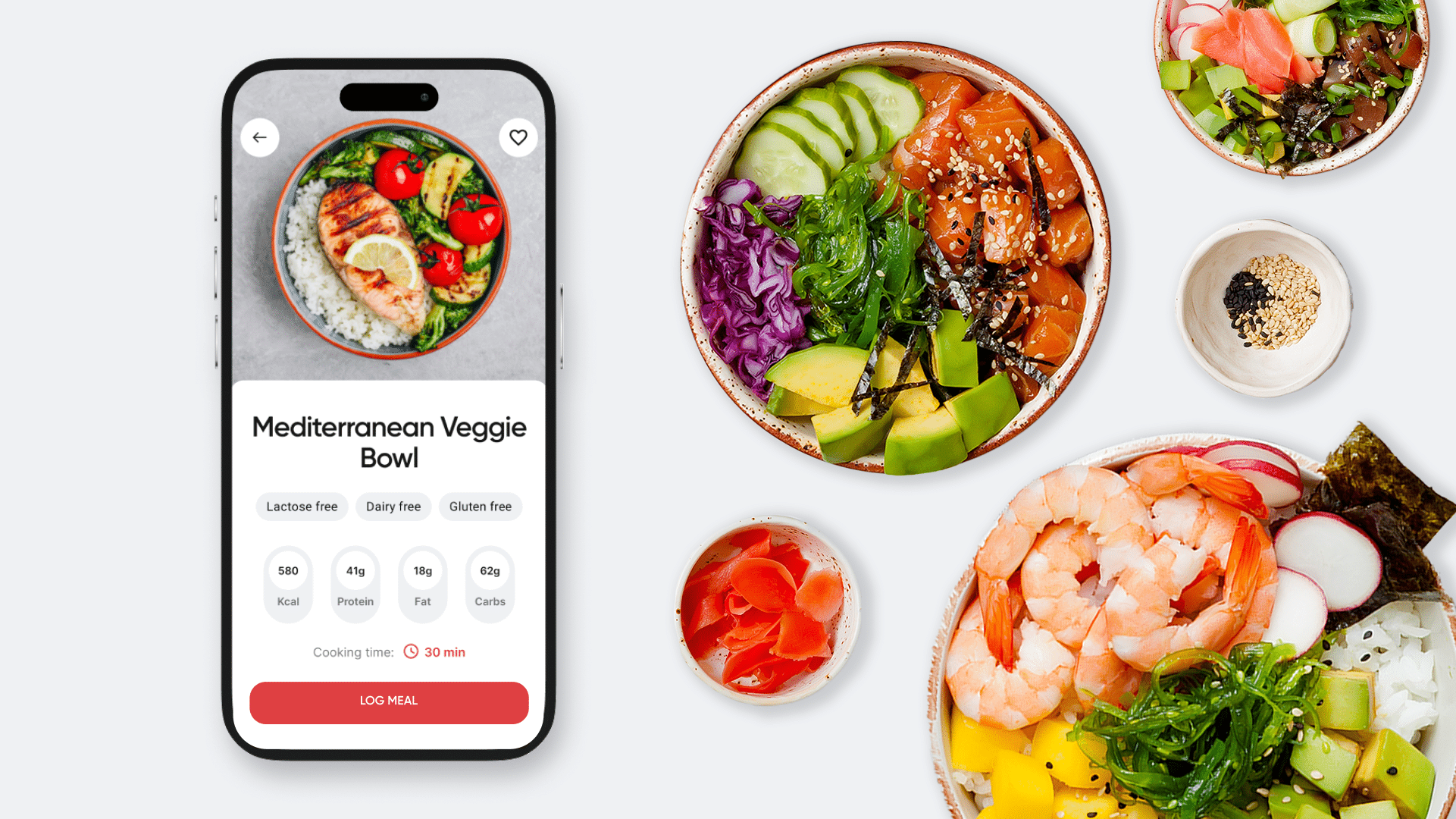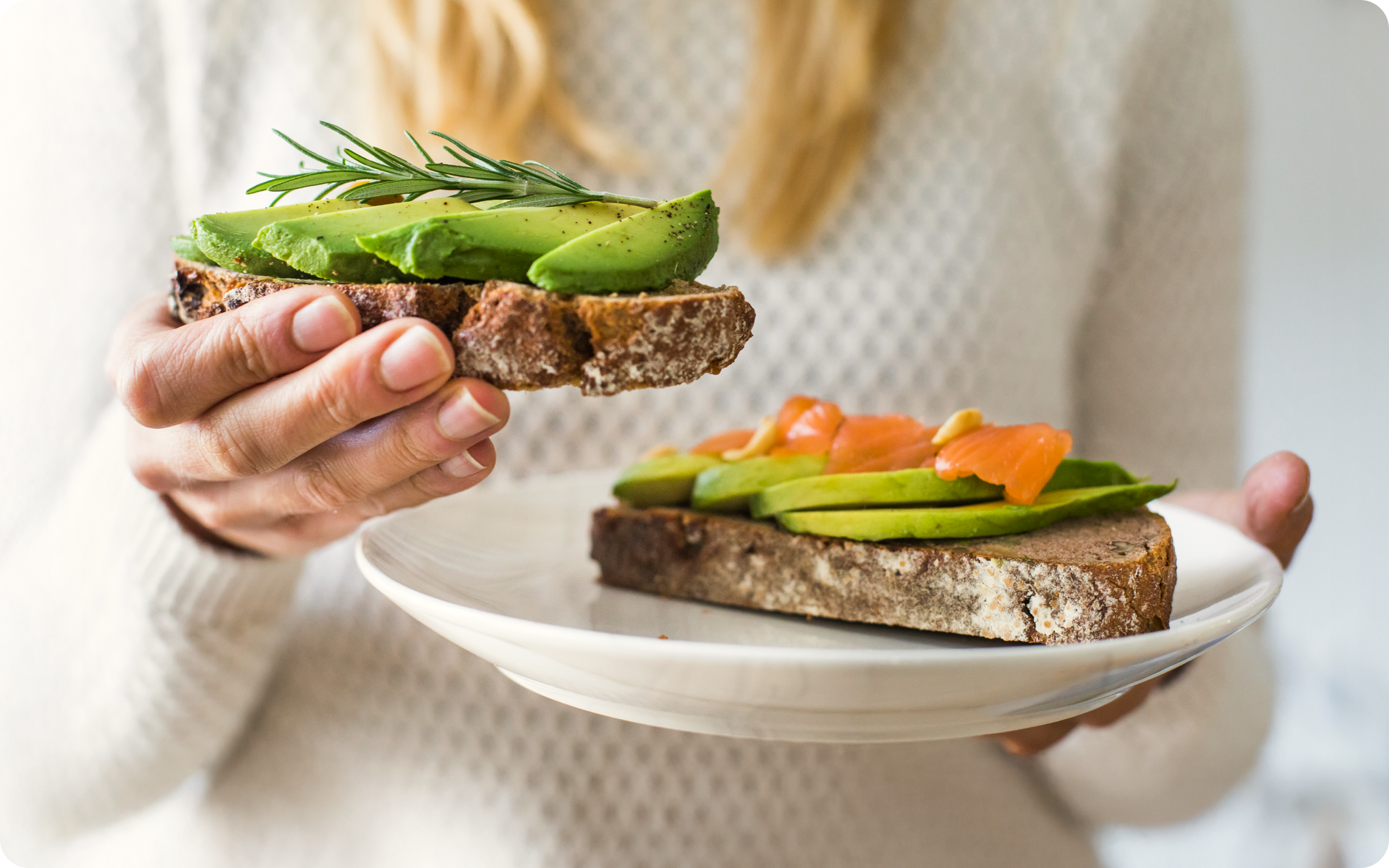In addition to cauliflower rice, other low-carb rice alternatives can be part of a healthy diet. It’s completely normal to wonder how many carbs you have in a serving of white rice. Whether you are watching your carb or calorie intake, low-carb rice substitutions can have a place in your healthy balanced diet.
Fortunately, low-carb rice alternatives can help prevent blood sugar spikes. This can be useful if you have diabetes or insulin resistance. Knowing how to eat rice, which alternatives to use, and what to eat with your rice can prevent high blood sugar levels. Let’s look into the ideal low-carb rice alternatives and some tips on how to eat rice in a healthy way.
What Are the Top 5 Healthiest Rice Alternatives?
Low-carb rice alternatives will help you enjoy rice in a healthy diet if you are watching your carbs, including the top five:
However, eating rice on a low-carb diet isn’t straightforward. Discover the low-carb rice secrets to enjoy the staple on a low-carb diet. Note that you’ll find much more than cauliflower rice.
BetterMe is your fast-track ticket to a long-lasting weight loss! Tailor your fitness journey and maximize your results with just a couple of swipes!
Can I Eat Rice on a Low-Carb Diet?
You can eat low-carb rice alternatives or some rice types with fewer carbs and more protein. However, most people avoid or limit white rice on a low-carb diet. Let’s talk about why.
What’s in a Cup of Cooked Rice?
The USDA states that one cup of cooked white rice without added salt contains 205 calories, 44.6 g of carbs, and less than a gram of fat (23). Meanwhile, the same serving only has 0.63 g of fiber and 4.25 g of protein.
Very low-carb diets like keto recommend eating 70-80% of your daily calories from fat, 10-20% from protein, and 5-10% from carbs (12). These numbers don’t add up for a low-carb diet.
White rice has far too much carbohydrates, too little protein, and almost no fiber. Even though your fat and protein will come from other foods in the meal, a single cup of white rice is still almost your entire carbohydrate allowance for the day on a typical keto diet.
The Joslin Diabetes Center suggests a balanced meal including healthy fats, protein, and fiber, to help the body digest carbohydrates better, preventing blood glucose spikes (8). The combination slows carbohydrate digestion and absorption into the bloodstream.
Balance is the key to eating rice on a healthy or low-carb diet. If you’re not on a very low-carb diet like keto, it’s okay to eat white rice in moderate portion size – just make sure to complete your meal with protein, healthy fat, and fiber from the other foods you eat with the rice.
Starch vs. Fiber in Rice
The Joslin Diabetes Center also talks about the three different kinds of carbohydrates (8). A cup of white rice may only contain less than a gram of sugar, one type of carb (23). However, it also has nearly zero fiber, meaning it relies on the third kind of carb: starch.
Starch is a carbohydrate the body uses for fuel. It does increase blood sugar levels after eating it, but this is only a concern if you have diabetes or insulin resistance. The rest of us have no problem getting that glucose into our cells where it is then used to produce energy.
If you do have impaired glucose tolerance or simply want to slow down the release of that energy and stay fuller for longer, pair your white rice with other foods that provide protein, fiber, and healthy fat. Cooked white rice is 80-90% starch-related carbs, with 6-8% protein, and trace amounts of fiber (21).
How to Eat Rice on Low-Carb and Keto Diets
If you are on a ketogenic diet, the starch carbohydrates in cooked white rice will disrupt ketosis (23, 21). A Harvard blog explains that ketosis only occurs when traditional fuel sources like carbs decline significantly enough for the liver to produce ketones from fat as an alternative fuel (12).
Eating white rice will disrupt ketosis if you’re on the low-carb keto diet. If you want to stay in ketosis, the best solution is to substitute regular rice with rice alternatives containing less starch and net carbs. Deduct the fiber content from the total carbs to get the net carbs in a rice serving (17).
Removing the fiber content lets you see the true nature of possible starch and sugar in rice alternatives. Then, add protein, healthy fats, and fiber to help your body slow the absorption of any carbs.
Read more: Push Day Workout: Your Blueprint to Powerful Chest, Shoulder, and Tricep Muscles
Low-Carb Diet Rice Alternatives to Avoid
Some rice alternatives have too many net carbs to enjoy on ketogenic and other very low-carb diets. They’ll disrupt ketosis just like normal rice.
Is Basmati Rice a Low-Carb Rice?
Basmati rice isn’t the answer to replacing regular rice on a low-carb diet. WebMD shows that a cup of cooked Basmati rice also has 210 calories and 45.3 g of net carbs, with less than a gram of fiber and fat each (15).
It’s high-carb, even though it has other benefits, and is rich in micronutrients, like vitamin B6, folate, and thiamine. White basmati rice is very similar in nutrient content to other types of white rice, while brown basmati is similar to other types of brown rice.
Is Brown Rice Low-Carb?
A cup of cooked brown rice has 248 calories, 48.47 g of net carbs, 3.23 g of fiber, 1.96 g of fat, and 5.54 g of protein (2). It has very similar nutritional values to white rice with just slightly more fiber and isn’t suitable for very low-carb diets.
Besides, keto usually requires you to eat less than 50 grams of carbs daily, and a cup of brown rice contains nearly that many carbs in a single portion (12, 2).
Which Grain Is the Lowest in Carbs?
A good low-carb rice alternative originates from grains that have less starch and more fiber. These low-carb grains have lower net carbs per serving.
Are Lentils Low-Carb?
WebMD states that a cup of cooked lentils has 28 g of net carbs, 18 g of fiber, 1 g of fat, and 24 g of protein (16). Cooked lentils are a high-protein, low-carb rice alternative with additional nutrients like calcium, potassium, and folate. Lentils are a rich plant-based protein source.
Is Bulgur Low-Carb?
The USDA confirms that a cooked cup of bulgur only has 25.71 g of net carbs, with 8.19 g of dietary fiber and 5.61 g of protein (3). It’s a cereal-type grain originating from cracked wheat berries and makes a great alternative to rice on a low-carb diet or for anyone wanting something with more fiber.
Is Couscous Low-Carb?
Couscous is another delicious substitute for rice. A cup of cooked couscous has 34.2 g of net carbs, 2.2 g of fiber, 0.25 g of fat, and 5.95 g of protein (11). Couscous comes from semolina flour or durum wheat and is rich in selenium, folate, and other essential nutrients.
Is Farro Low-Carb?
WebMD recommends Farro as a nutrient-dense, low-carb rice alternative (13). A quarter cup of Farro has 27 g of net carbs, 3 g of fiber, 0 g of fat, and 6 g of protein.
Is Whole-Wheat Orzo Low-Carb?
Whole-wheat orzo has the top end of net carbs to consider in moderation on a low-carb diet. If you’re not on a low-carb diet but just want a higher fiber alternative to white rice or pasta, whole wheat orzo is a great option. A cup of cooked and unsalted whole-wheat orzo pasta has 36.6 g of net carbs, 5.5 g of fiber, 2.4 g of fat, and 8.4 g of protein (7).
Is Quinoa Low-Carb?
The USDA shows that a cup of soaked quinoa contains 34.22 g of net carbs, 5.18 g of fiber, 3.55 g of fat, and 8.14 g of protein (22). Meanwhile, quinoa is a plant-based protein source with loads of protein-rich flavors to enjoy on a low-carb diet or a generally healthy, balanced diet.
Is Wild Rice Low-Carb?
Wild rice is a low-carb rice cooker grain replacement idea originating from grasses from the Zizania plant genus. However, this delicious alternative only has 31.95 g of net carbs, 2.95 g of fiber, 0.55 g of fat, and 6.54 g of protein per cooked cup (27).
If you’ve mustered up the courage to crush your weight loss goal, let Betterme take the sting out of this demanding process. Our app will help you restructure your habits, remold your life and crank up your fitness results!
What Is a Good Carb to Replace Rice? Our Top Alternatives!
The top five healthy rice alternatives for a low-carb diet only touched the surface. Let’s show you how many low-carb rice alternatives exist. Remember to enjoy each substitute in moderation and balance it with enough protein, healthy fat, and fiber for healthier low-carb meals.
Is Broccoli Rice Low-Carb?
Broccoli rice is one of the greatest alternatives to regular rice. An 85-gram portion of cooked broccoli rice has 1 g of net carbs, 3 g of fiber, 0 g of fat, and 3 g of protein (1). The protein, carb, and fiber balance is one of the best rice substitutes you can enjoy on even the lowest-carb diets.
Is Cabbage Rice Low-Carb?
Fortunately, cabbage is good for more than a side veggie. You can make cabbage rice to substitute the high-carb regular rice. A 100-gram portion of cooked cabbage without salt has 3.61 g of net carbs, 1.9 g of fiber, 0.06 g of fat, and 1.27 g of protein (4).
Is Carrot Rice Low-Carb?
Carrot rice sounds insane, but you can thinly slice carrots in a Julienne style to replace rice as a lower-carb staple. A 100-gram portion of cooked and unsalted carrots has 5.22 g of net carbs, 3 g of fiber, 0.18 g of fat, and 0.76 g of protein (9). The protein is low. So, add a protein-rich addition to the meal.
Is Cauliflower Rice Low-Carb?
Cauliflower rice is a popular substitute for regular rice on low-carb diets. A 100-gram serving of cooked and unsalted cauliflower has 1.81 g of net carbs, 2.3 g of fiber, 0.45 g of fat, and 1.84 g of protein (10). Increase the protein with a piece of lean meat when eating cauliflower rice.
Is Rutabaga Rice Low-Carb?
Rutabagas are gaining popularity among low-carb enthusiasts. Meanwhile, a cup of cooked and unsalted rutabaga has 8.9 g of net carbs, 3 g of fiber, 0.3 g of fat, and 1.6 g of protein (5). Rutabaga rice is another excellent low-carb rice substitute originating from plants.
Is Shirataki Rice Low-Carb?
Shirataki rice or miracle rice has low carbs, but the taste and texture takes some getting used to. However, once you do, 3 oz of cooked Shirataki rice has 1 g net of carbs, 2 g of fiber, 0 g of fat, and 0 g of protein (6). Add a rich protein source to Shirataki noodles before eating them as a rice substitute.
Read more: 3 Healthy Rice Recipes for Weight Loss
Is Spaghetti Squash Low-Carb?
Vegetable-based substitutes for low-carb rice are plentiful and delicious. The USDA shows a cup of cooked spaghetti squash has 7.53 g of net carbs, 2.17 g of fiber, 4.32 g of fat, and 1.01 g of protein (24). Spaghetti squash is a tasty alternative to rice on the side of a protein-rich meal.
Is Zucchini Rice Low-Carb?
Another low-carb rice substitute (not cauliflower) is zucchini rice. The USDA suggests a cup of skin-on, cooked, and unsalted zucchini has 3.04 g of net carbs, 1.8 g of fiber, 0.65 g of fat, and 2.05 g of protein (25). Plant-based rice alternatives make the most delectable options.
For more rice-related curiosity:
FAQs
Which Rice Is the Best for Weight Loss?
High-fiber, high-protein rice helps weight loss because the essential nutrients keep you full and slow the absorption of carbohydrates (8). My Community Health Network reports that protein and fiber are instrumental to weight loss (14). Ultimately, the substitute highest in protein and fiber compared of the vegetable-based alternatives is broccoli rice, but lentils are very high in protein and fiber if they work as a substitute for your dish (1).
Is Basmati Rice the Healthiest?
WebMD states that Basmati rice is nutrient-rich, with thiamine, vitamin B6, folate, magnesium, iron, copper, phosphorus, and zinc (15). However, it has a similar nutrient content to other types of rice, and they are all similarly healthy.
Is Basmati or Jasmine Rice Healthier?
All types of rice, including basmati and jasmine, have similar nutrient contents and are similarly healthy. The brown versions of each type have slightly more fiber than the white versions (15, 18).
Which Rice Has the Least Starch?
All types of rice are high in starch, some of which is resistant starch, a type of starch that is known for passing through without absorption. WebMD says resistant starch is a form of nutrient that acts more like a dietary fiber, which may assist in weight loss (26). The resistant starch content in rice may increase after it has been cooked, cooled and reheated.
The Bottom Line
Low-carb rice alternatives come in two primary forms: substitute grains or vegetable-based replacements. Check the net carbs if you’re on a low-carb diet. Try one of our top five low-carb rice alternatives.
DISCLAIMER:
This article is intended for general informational purposes only and does not serve to address individual circumstances. It is not a substitute for professional advice or help and should not be relied on for making any kind of decision-making. Any action taken as a direct or indirect result of the information in this article is entirely at your own risk and is your sole responsibility.
BetterMe, its content staff, and its medical advisors accept no responsibility for inaccuracies, errors, misstatements, inconsistencies, or omissions and specifically disclaim any liability, loss or risk, personal, professional or otherwise, which may be incurred as a consequence, directly or indirectly, of the use and/or application of any content.
You should always seek the advice of your physician or other qualified health provider with any questions you may have regarding a medical condition or your specific situation. Never disregard professional medical advice or delay seeking it because of BetterMe content. If you suspect or think you may have a medical emergency, call your doctor.
SOURCES:
- Broccoli Rice By EAT SMART Nutrition Facts and Analysis (n.d., nutritionvalue.org)
- Brown Rice vs. White Rice: Which Is Most Healthiest? (2023, medicalnewstoday.com)
- Bulgar, Cooked (2019, fdc.nal.usda.gov)
- Cabbage, Cooked, Boiled, Drained, Without Salt (2019, fdc.nal.usda.gov)
- Calories in Rutabagas, Cooked, Boiled, Drained, Without Salt – 1 Cup (n.d., nutritionix.com)
- Calories in Shirataki Rice From Miracle Rice (n.d., nutritionix.com)
- Carbs in Orzo, Whole Wheat, Cooked in Unsalted Water (n.d., carbmanager.com)
- Carbs, Protein, and Fats – Their Effect on Glucose Levels (2021, joslin.org)
- Carrots, Cooked, Boiled, Drained, Without Salt (2019, fdc.nal.usda.gov)
- Cauliflower, Cooked, Boiled, Drained, Without Salt (2019, fdc.nal.usda,gov)
- Coucous, Cooked (2019, fdc.nal.usda.gov)
- Diet Review: Ketogenic Diet for Weight Loss | The Nutrition Source (n.d., hsph.harvard.edu)
- Farro: Health Benefits, Nutrients Per Serving, Preparation Information, and More (2022, webmd.com)
- Fiber and Protein: Why a High-Protein, High-Fiber Diet Will Change Your Life (2022, mychn.org)
- Health Benefits of Basmati Rice (2022, webmd.com)
- Health Benefits of Lentils (2021, webmd.com)
- How to Calculate Net Carbs (2023, healthline.com)
- Jasmine Rice vs. White Rice: Differences and Which is Healthier? (2023, medicalnewstoday.com)
- Mushroom Rice Nutrition Facts – Eat This Much (n.d., eatthismuch.com)
- Popcorn, NFS (2020, fdc.nal.usda.gov)
- Quantifying Grain Digestibility of Starch Fractions in Milled Rice (2019, pubmed.ncbi.nlm.nih.gov)
- Quinoa, Cooked (2019, fdc.nal.usda.gov)
- Rice, White, Long-Grain, Regular, Unenriched, Cooked Without Salt (2019, fdc.nal.usda.gov)
- Spaghetti Squash, Cooked (2019, fdc.nal.usda.gov)
- Squash, Summer, Zucchini, Includes Skin, Cooked, Boiled, Drained, Without Salt (2019, fdc.nal.usda.gov)
- What to Know About Resistant Starches (2022, webmd.com)
- Wild Rice, Cooked (SR Legacy 168897) (2019, fdc.nal.usda.gov)










